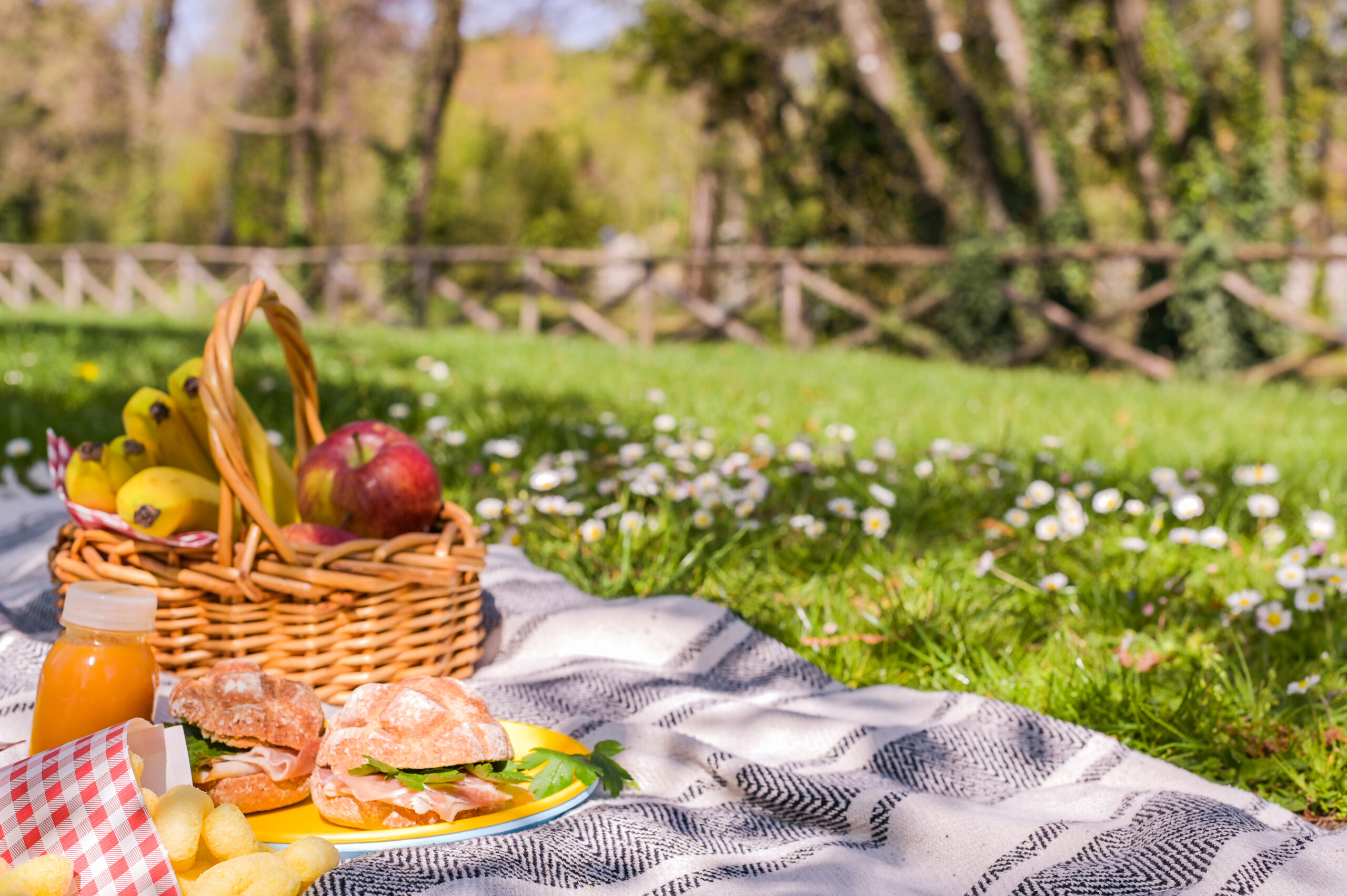The Prominent Pests of 5 Popular Summer Activities
The Prominent Pests of 5 Popular Summer Activities
Summer is the season of wanting to fill every free minute with fun activities. Some people prefer to enjoy the season indoors with the relief of the air conditioner, while others want to capture every hour of daylight that they can outdoors. The best ways to “beat the heat” outside typically involve jumping into a cool body of water, whether it is the main event or is the reward for spending previous hours outside in the heat. No matter what your favorite summer activity is, one thing is for sure: pests are never invited to the party. The age-old summer tradition is to swat away flying insects while sitting on the back patio or out by the lake, but why do some pests seem to be more common around certain areas than others? Let’s take a look at five of the most popular summertime activities and the two pest species of each that always seem to make an appearance, despite the fact that we never actually want to share these events with them.
Picnic

There is nothing like a good-old-fashioned picnic on a warm summer day. Whether it’s with family, friends, or yourself, it’s a nice change of pace to enjoy a meal while sitting on a huge blanket on top of the grass. Unfortunately, it is not always possible to even enjoy a simple picnic without some uninvited guests making an appearance, and we’re not talking about your nosy neighbors…
Ants: If there was one popular pest stereotype that has been passed down for generations, there’s a good chance that it’s ants invading a picnic. These foraging insects spend their days searching for food sources that can sustain their colony, so a picnic is the grand buffet for hungry ants. Ants leave pheromones in a trail leading up to a safe food source so that the rest of their colony can flock to the same source and gather as much as they can. They will settle for just about anything, but ants generally prefer sweets and proteins for maximum energy. They also crave water to quench their summer thirst, so any spilled drinks will attract these pests as well. Sugar ants are commonly found around sugary foods and drinks, true to their name, and they are frequent picnic invaders. If you want to set up your picnic in the sunlight, make sure you inspect the ground before laying the blanket down; fire ants like to build their nests in sunny areas, and their bites are some of the most painful of any ant species!
Grasshoppers: Predictably, grasshoppers are often found in tall grasses and greenery. These pests are the worst nightmare of anyone in the farming or gardening businesses, as grasshoppers devour any kind of plant and vegetation. Their eggs start to hatch in June and begin to unleash a new generation of troublesome pests upon the natural world. Grasshoppers like to hide in tall foliage because it gives them the perfect cover while they scope out their next meal. They will also chew through fabrics and window screens if they are hungry enough, which is how grasshoppers can get inside a house during the warm weather. Grasshoppers are technically beneficial since they also eat small insects and young pests, but their usual food source is any kind of greenery. If your picnic is anywhere near a lot of plant growth or a lush field, grasshoppers will likely make an appearance at your meal. They will not bite unless they feel threatened, but their bites are harmless and don’t have lasting symptoms anyway. At a picnic, their worst offense is being too close for comfort due to their creepy appearance.
Pool Day

Spending time in the pool is an excellent way to spend a summer day, whether you have your own or you frequent the nearby community pool. You can sit poolside and finally dive into that novel that’s been sitting on your bookshelf for months, or play every pool game with your children that they can imagine. It may seem strange to think of pests being near a pool since it is not fresh water, but pests will go where they choose regardless of what we think.
Spiders: These arachnids like to stay in dark and cool areas as much as possible, and even they like to use water to cool off in the summer. Spiders need to live where they have constant access to food, so where they are plenty of insects, a spider is sure to follow. They like to hide in the shadows and craft webs that will eventually catch their prey under chairs, umbrellas, and pool equipment. If you have a large container or chest of pool toys for your kids, make sure to inspect the interior before they start frantically digging through for their favorites. These are the most common pool-related habitats of spiders every year, and they will not be too happy to be found! The two most dangerous U.S. spiders – black widows and brown recluses – can also be found around the pool if they have shaded spots and greenery to hide within. Their bites are laced with dangerous venom that can be extremely dangerous when left untreated, so if you or anyone in your party is bitten by these spiders, seek medical attention immediately.
Water Striders: These are the alien-looking insects that effortlessly glide across the water’s surface and seem to be in their own world while everyone else is trying to get them out of the pool. Water striders are dark-colored with long legs that they use to travel through water quicker than most insects. Just like spiders, water striders will only live where their food is, which includes any kind of tiny insect. These pests are not “walking on water” like the rumors say, as amazing as that would be. They use the membrane on the water’s surface to travel through the liquid and glide towards their prey. Water striders are completely harmless to humans and won’t bite us, so it is thankfully easy to scoop them up and toss them out of the water. Although they are solitary insects, water striders are an eyesore to have in the pool.
Backyard Barbecue

There is just something about summer weather that is perfect for throwing some food on the grill and enjoying the feast on the back porch. It’s amazing what you can barbecue these days: meats, potatoes, corn, eggplant, tomatoes, bread, and even desserts! It’s fun to invite friends and family over for an evening filled with delicious barbecued food, but humans are not the only ones who are drawn to a food-based gathering.
Stinging Insects: Most species will not venture extremely far from their nests, so if you find yourself face-to-face with some stinging insects, it is pretty likely that their nest is somewhere in the yard. Bees and wasps like to construct their nests on a sturdy surface that also offers some protection from predators and the weather, which makes it unfortunately easy for an infestation to remain hidden for a long time. Their favorite spots include anywhere around decks, eaves, porches, and fences. Most species don’t reuse the same nest every year, so the nests you see this year are likely freshly-built. These pests – wasps in particular – are generally more aggressive in the summer due to the hot temperatures. They are often found around barbecues because they love meat and sweets, and yellow jackets are the most common visitors of them all. It is bad enough to risk receiving some stings while spending time in your own backyard, but it is even worse if anyone at the gathering is allergic to the stings.
Flies: Of course, we couldn’t mention backyard barbecues without discussing the most infamous food pests of all: the fly. Flies are known for annoyingly flying around our plates of food while we are trying to eat, and it is simply because they think our food looks pretty great too! Houseflies are frequent visitors of barbecues since they are seeking shelter from the heat, and the nearby house is the perfect place for them to cool off and find some kind of food source to sustain them. Flies need to walk all over the food before eating because their taste and smell receptors are on their legs, so they literally need to touch the food to taste it. Since they also enjoy rotten food and excrement, flies contaminate everything they touch and can cause food poisoning symptoms in people who eat food that was previously walked on by these disgusting insects.
A Hike

The secret to a fun summer hike is to complete it (or, at least, most of it) in the morning. Temperatures can reach a dangerous spike in the afternoon, so the safest way to do this is to hike before the temperature rises to an unbearable level. Water, snacks, and good hiking shoes are essential to any hike, but even these are not enough to keep certain pests away.
Ticks: The most dreaded pest during a hike, ticks are a hidden danger of any time spent out in nature. They are much more populous in the summer because they have many more opportunities for meals since people spend more time outside when the weather is warm. Ticks hide in tall grass and thick greenery while they wait for a warm-blooded host to walk by, then stealthily hitch a ride on their new host. After ticks feed nearly to the point of bursting (ever heard of “as full as a tick?”), they retreat back into hiding to digest for a week. Ticks can carry many different diseases at once, including Lyme disease, Rocky Mountain spotted fever, and anaplasmosis. Not every tick is infected, so it is possible to be bitten and just have an itchy welt. But if you start experiencing other symptoms afterward, like a rash or feeling dizzy, seek medical attention immediately. To avoid ticks as much as possible, stay on the trail and don’t go into thick brush.
June Beetles: These pests are more worrisome when they invade your own garden, but they are still a common sight on any hike near lots of foliage. These beetles are either reddish-brown or metallic green, and can be up to 1 inch long. June beetles produce eggs in the summer that hatch shortly after, and the white grubs are definitely the most destructive phase of them all. The grubs eat plant roots and decomposing plants, and can gradually ruin a whole patch of greenery throughout the rest of their lives. The adult June beetles stick with the leaves of these plants and can quickly leave them bare and unable to recover. They are another dreaded pest of any farmer or gardener because they destroy important crops like potatoes, grains, and corn. Thankfully, June beetles are harmless to humans and cannot bite or sting us. They may not make a splash out in nature, but you definitely do not want June beetles anywhere near your own backyard.
Lake/River Day

There are plenty of rivers and lakes in Virginia to enjoy, and a fun summer tradition is to make a day of it. No lake/river day is complete without a picnic lunch, cold drinks, beach towels, and some summery tunes. That being said, we could do without the pests that also like to spend their days near the fresh water.
Mosquitoes: Ah, mosquitoes: the quintessential summer pest that can turn a pleasant evening into an itchy nightmare in the span of an hour. They love warm weather and humidity, which is why they are the most active in the dead of summer. Mosquitoes lay their eggs in still, fresh water or very damp soil because the first 3 life stages are spent completely in the water. Since they lay about 100 eggs at a time, it is easy for a mosquito invasion to take place when everything is damp after a summer rainstorm. Out in nature, mosquitoes like to lay their eggs near the bank of a calm lake, pond, or river. This also keeps them close to the greenery and foliage that they eat when they do not have eggs. Mosquitoes are most active at dusk and dawn, so if you are going out around these times, we recommend spritzing yourself with bug spray before heading down to the water.
Millipedes: Although these critters are important for the decomposition of plant matter, they can quickly become a pest when they invade our belongings and unintentionally invade our homes after a day at the lake. Millipedes emerge from their home in soaked soil to feed, so it is easy to miss them when they are in hiding. They tend to invade in the fall more often because of the cool temperatures, but they can still be found during the summer. Millipedes love mulch and thick vegetation, and they will devour all of the decomposing material around the base of the plants in order to stay cool while they feed. Millipedes are harmless to humans and want nothing to do with us, but the fact that they are literal creepy-crawlies is enough to make us want to stay far away from these pests.
Make This Summer a Splash with Green Pest Services
Summer is when everyone dreams of having carefree days that are not filled with the typical stresses of everyday life. After all, there are too many fun activities and hours of daylight to spend them worrying about something so time-consuming as pest control! Our team of experienced technicians are dedicated to solving every pest issue with complete care and efficiency, as we want our clients to enjoy their summer days free of pest concerns. We create a customized service plan for every property in order to provide a personalized combination of treatments depending on the layout, pest species, and areas of pest activity. We do the hard work of eliminating pests so you can enjoy a pest-free home as soon as possible. Contact us for a free quote on our eco-friendly pest control and to learn how our knowledgeable team can ensure that your days are spent enjoying the summer sun, not battling an army of pests!
Citations
7 pests that thrive in the summer. (2017, June 1). Vulcan Termite. Retrieved May 17, 2023, from https://www.vulcantermite.com/seasonalpests/7-pests-thrive-summer/
Merchant, M. (Dr.) (2019, July 30). Hot weather and pests. Texas A&M AgriLife Extension. Available at https://schoolipm.tamu.edu/2019/07/30/spn-hot-weather-pests-and-remember-to-monitor/ (Accessed on May 17, 2023).
Summer bugs and pests to look out for. (n.d.). Terminix. Retrieved May 17, 2023, from https://www.terminix.com/blog/whats-buzzing/common-summer-pests/
Top 10 summer pests. (n.d.). All Pest Exterminating Inc. Retrieved May 17, 2023, from https://allpest-thoroughcheck.com/top-10-summer-pests/

